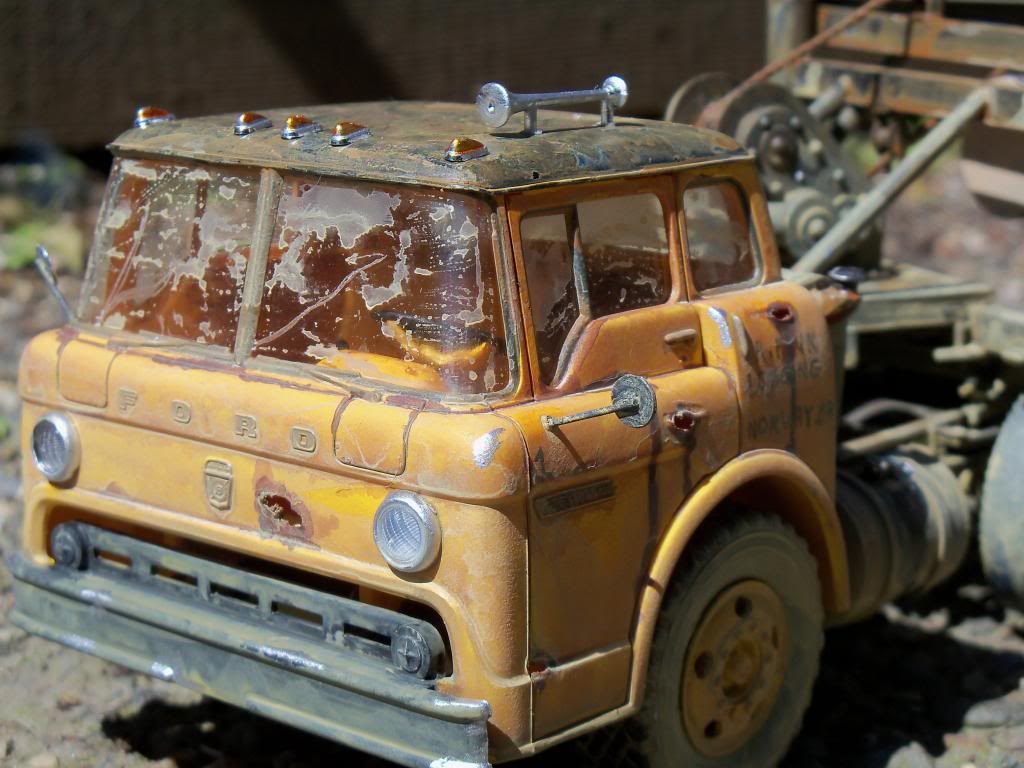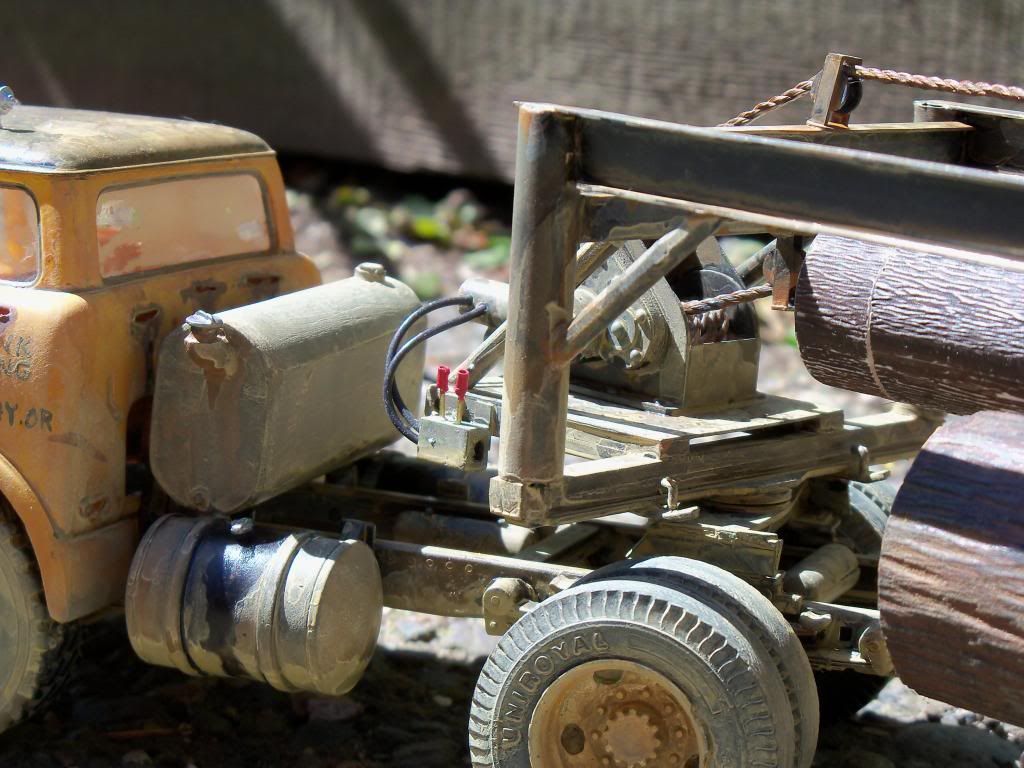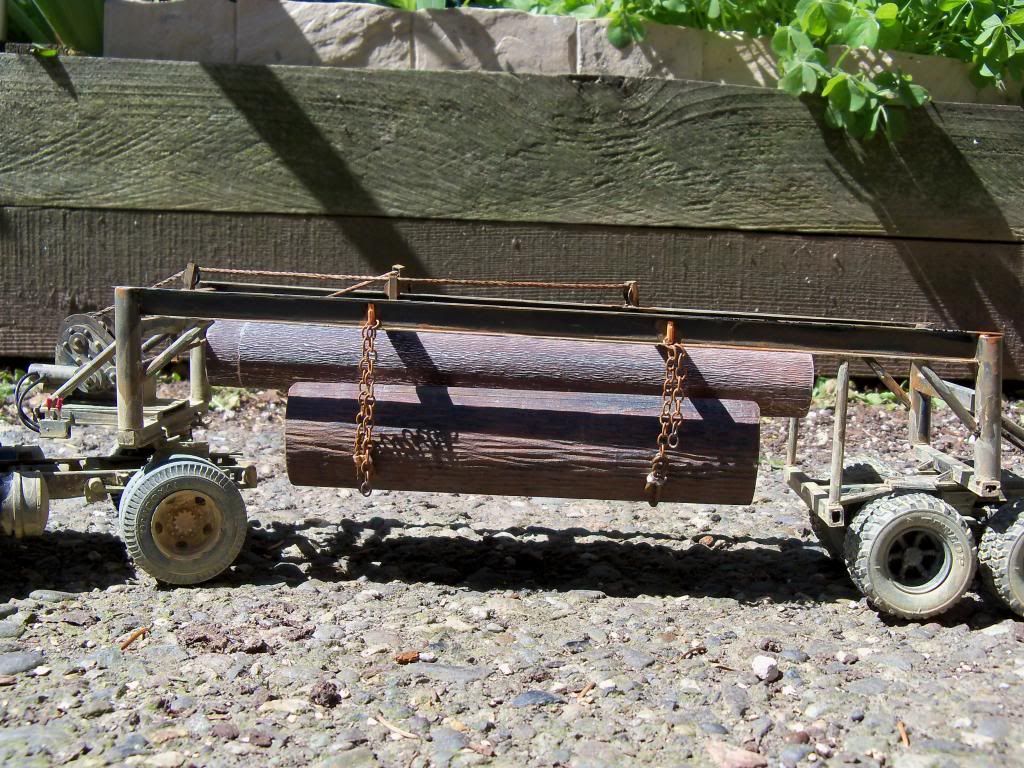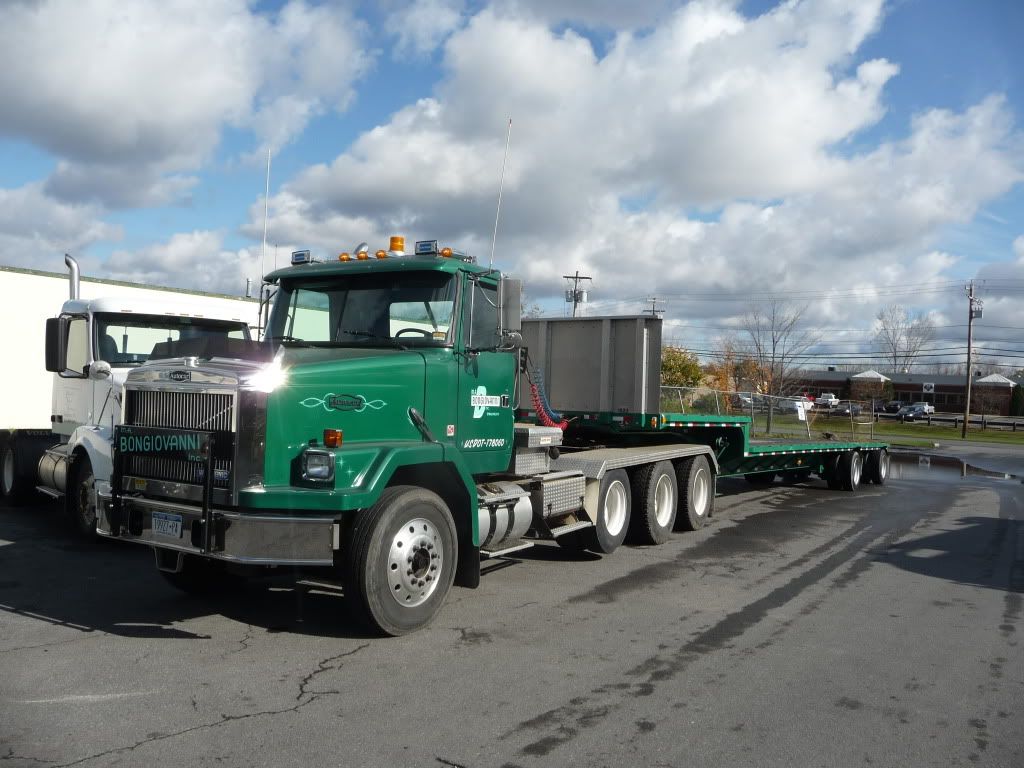Post by Muleskinner on Apr 23, 2013 12:00:50 GMT -8
Back in the early and late fifties over by Truckee and Yosemite there was a lot of experimenting with newer ways to bring logs out of the woods and making do with what you have. One of these experiments which really didn't last too long was the cradle type Logging Truck. What it amounted to was the use of the logging trailer and truck bunks, remove the reach and add over head framing to the stakes, and an old power winching unit which was laying around the shop, plus a few old blocks for the hay wire to run in and you came up with a trailer unit which would go down in the historical annals of the Logging industry as a not only failure by all rights, but also as one of the logging Marvels of the century.
The problem was many for the unit. They stemmed from the fact when the truck was in in motion, so was the logs which were suspended below the frame in haywire cradle. That is if the truck turned one way the load swung the opposite direction and caused numerous turn overs. The load also had a tendency to swing forward and backwards in the haywire cradle and push the truck forward and then jerk it backwards, putting stress on the forward bunk which was attached to the truck. The trailer for some reason, was not designed to have brakes so the tendency to push the rig forward in an emergency stop and was always a harrowing experience for the driver.
Loading and unloading was another problem as the driver would have to lower the load to the ground then shove blocks up against the logs before proceeding to undo the chaining end of the haywire from the over head framing. The rig itself had to be unloaded on level ground for any slight deviation or slope would cause the logs to roll the minute they were lowered and the slack let out in the wire. Once the load was on the ground and blocked and the cables released, the load had to be pushed or winched from under the frame. To load this rig, the haywire had to be played out and the load rolled on top of it and then once the load was blocked underneath, the chain ends were attached to the tie downs of the trailer and the load was then winched up under the frame.
Another problem faced with this system was no log scaler in his right mind would ever want to be under this framing where the logs were suspended to scale the load. I Know if I was told to scale it I would have some sadistic words for the Hog Boss and most likely be looking for another job.
When I researched and started building this unit, I dumped out a whole box of left over parts from the AMT Logging trailer which I had and scrounged up the trailer rear end unit and various other parts an assembled them into what resembled the rear of the original 1:1 unit. Since I didn't have the old 1941 dodge military rig that was used on the original, I resorted to the only fifties rig I Had, which was the AMT tilt cab 600 unit which served the purpose of the suicide cab for the rig. Everything else is scratch build from evergreen plastic. The haywire is surveying cord painted to represent the cradling slings. Since this was to represent a shop built rig I also used various type wheels and tire of resin, to give it that use what you have look as with a lot of logging rigs.
Keeping with my belief that Logging Trucks were the first Pacific Northwest early American ATV's, the whole unit was weathered using various shades of Earth, Mud, rust and Dirt, Model railroad paint. I also ground out the inside of the cab and then picked rust holes in it to represent a truck which was well used before becoming the rig designated to haul this system.
Anyway below is the results of this build which was kinda of fun to do and let me experiment with new weathering techniques I always wanted to try. It was then lettered for R. FINK Logging , Norway, Oregon a fictional logging company which I thought would fit the rigs personality. Hope you like it.




The problem was many for the unit. They stemmed from the fact when the truck was in in motion, so was the logs which were suspended below the frame in haywire cradle. That is if the truck turned one way the load swung the opposite direction and caused numerous turn overs. The load also had a tendency to swing forward and backwards in the haywire cradle and push the truck forward and then jerk it backwards, putting stress on the forward bunk which was attached to the truck. The trailer for some reason, was not designed to have brakes so the tendency to push the rig forward in an emergency stop and was always a harrowing experience for the driver.
Loading and unloading was another problem as the driver would have to lower the load to the ground then shove blocks up against the logs before proceeding to undo the chaining end of the haywire from the over head framing. The rig itself had to be unloaded on level ground for any slight deviation or slope would cause the logs to roll the minute they were lowered and the slack let out in the wire. Once the load was on the ground and blocked and the cables released, the load had to be pushed or winched from under the frame. To load this rig, the haywire had to be played out and the load rolled on top of it and then once the load was blocked underneath, the chain ends were attached to the tie downs of the trailer and the load was then winched up under the frame.
Another problem faced with this system was no log scaler in his right mind would ever want to be under this framing where the logs were suspended to scale the load. I Know if I was told to scale it I would have some sadistic words for the Hog Boss and most likely be looking for another job.
When I researched and started building this unit, I dumped out a whole box of left over parts from the AMT Logging trailer which I had and scrounged up the trailer rear end unit and various other parts an assembled them into what resembled the rear of the original 1:1 unit. Since I didn't have the old 1941 dodge military rig that was used on the original, I resorted to the only fifties rig I Had, which was the AMT tilt cab 600 unit which served the purpose of the suicide cab for the rig. Everything else is scratch build from evergreen plastic. The haywire is surveying cord painted to represent the cradling slings. Since this was to represent a shop built rig I also used various type wheels and tire of resin, to give it that use what you have look as with a lot of logging rigs.
Keeping with my belief that Logging Trucks were the first Pacific Northwest early American ATV's, the whole unit was weathered using various shades of Earth, Mud, rust and Dirt, Model railroad paint. I also ground out the inside of the cab and then picked rust holes in it to represent a truck which was well used before becoming the rig designated to haul this system.
Anyway below is the results of this build which was kinda of fun to do and let me experiment with new weathering techniques I always wanted to try. It was then lettered for R. FINK Logging , Norway, Oregon a fictional logging company which I thought would fit the rigs personality. Hope you like it.











